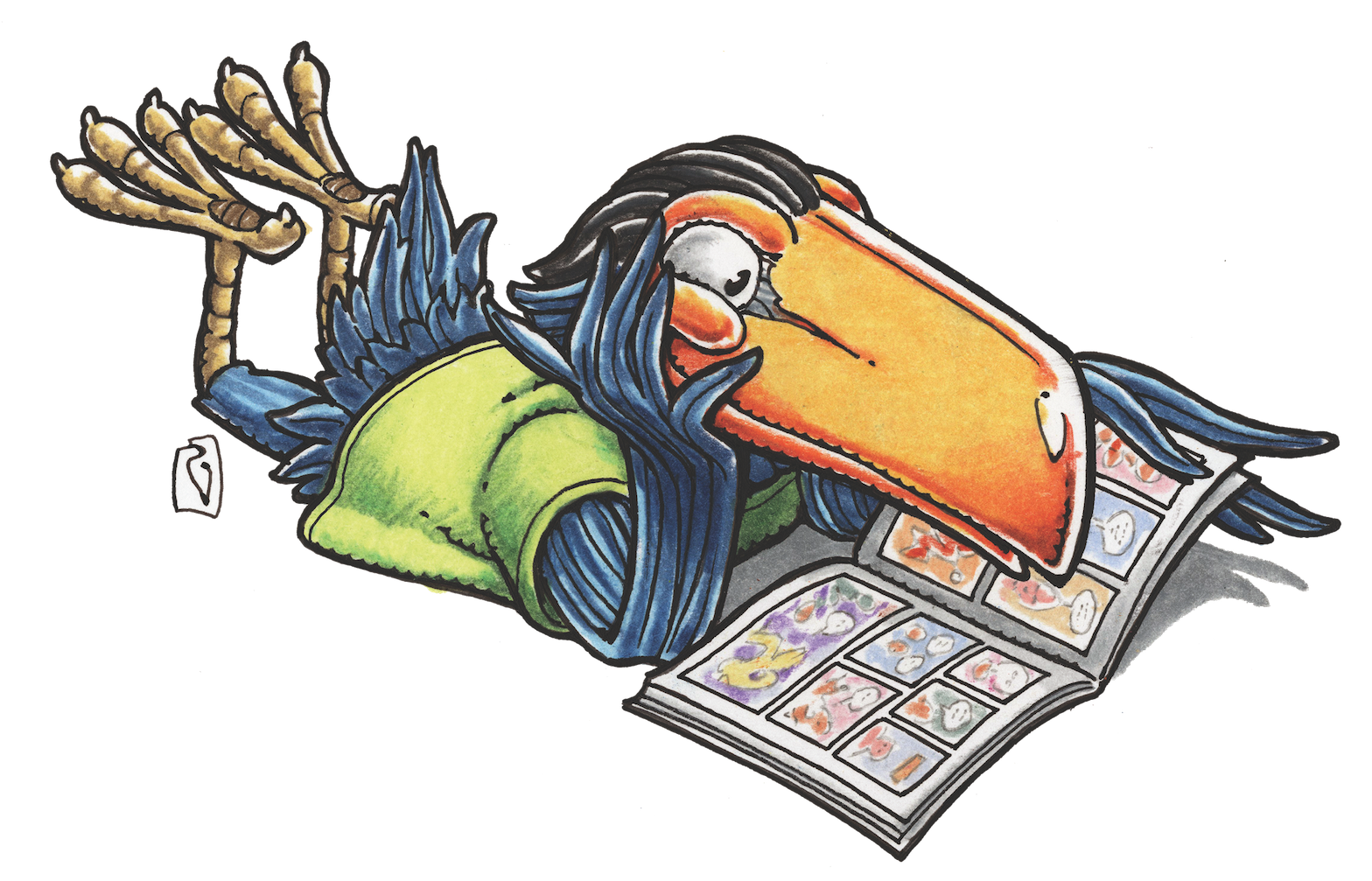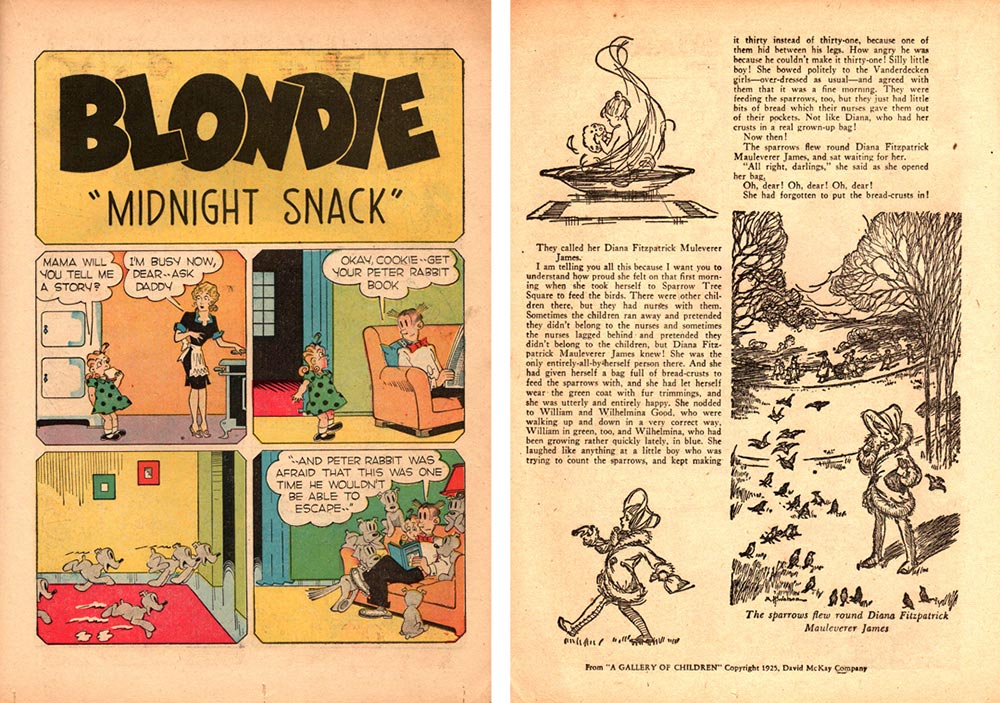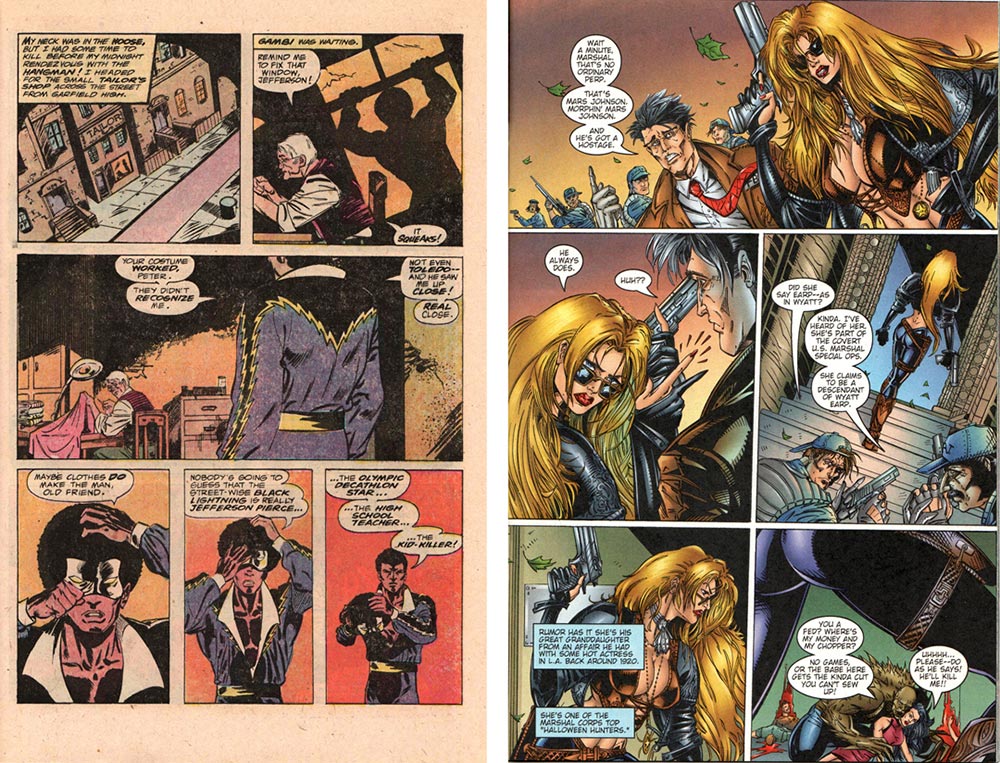MAGGIE’S WORLD BY MAGGIE THOMPSON
Maggie’s World 059: Licensed to Thrill


“Your movies are huge! Loads of kids are going to come into our restaurant, if we give away your toys.”
“Yeah, but your restaurants are everywhere. I mean, loads of kids are going to come to our movie, if they’ve been given toys for it.”
An episode of the BBC radio series John Finnemore’s Souvenir Programme in 2012 featured that debate between two staffers trying to figure out who would owe whom in licensing a movie for a burger chain’s toys.
It came to mind, when a friend recently contrasted the diversity of comic books that filled the newsstands in the Golden Age and the series that appeared once superheroes dominated the market. A look at the variety of those pre-Code days reveals not only diversity, but also the vast number of comics that had depended on providing comic book content based on characters already popular in other pop culture.
Consider …

Early Comics
The pages of the comics that the Overstreet Price Guide terms “Platinum Age” are largely comic strip reprints, repackaged into collections. Cupples & Leon, Saalfield, David McKay, and Whitman were not alone in publishing such books. The model was already in place when it came time to try providing comics magazines for newsstand distribution.
A quick look at the “newsstand” feature on the “Mike’s Amazing World” site finds Eastern Color’s Funnies on Parade #1 (June 1933) as the first traditional comic book, with Famous Funnies #1 (October 1933) and Century of Comics #1 (December 1933) following by year’s end. The contents? Strip reprints. In 1934, Eastern brought out more reprints with Skippy’s Own Book of Comics and two restarts of Famous Funnies. And then DC brought out New Fun #1 (February 1935)—emphasizing the “New.” Suddenly, original creations hit the stands.
Nevertheless, the success of basing comic-book contents on licensed characters had solidly established itself. Consider this random sample of characters that became comic-book regulars:
- 1907 July Cisco Kid [story “The Caballero’s Way,” Everybody’s Magazine]
- 1912 October Tarzan [book Tarzan of the Apes, The All-Story Magazine]
- 1922 October Fritzi Ritz [comic strip]
- 1927 September Oswald Rabbit [film “Trolley Troubles”]
- 1928 November Mickey Mouse [film “Steamboat Willie”]
- 1929 January Popeye [comic strip Thimble Theatre]
- 1930 April Joe Palooka [comic strip]
- 1930 September Blondie [comic strip]
- 1931 October Dick Tracy [comic strip]
- 1932 December Conan [story “The Phoenix on the Sword,” Weird Tales Magazine]
- 1933 January Lone Ranger [radio]
- 1934 January Flash Gordon [comic strip]
- 1934 June Mandrake [comic strip]
- 1934 June Donald Duck [film “The Wise Little Hen”]
- 1935 February Little Lulu [panel in the Saturday Evening Post]
- 1935 March Porky Pig [film “I Haven’t Got a Hat”]
- 1936 January Green Hornet [radio]
- 1938 April Roy Rogers [film Under Western Stars as Rogers]
- 1940 February Tom and Jerry [film “Puss Gets the Boot”]
- 1940 July Bugs Bunny [film “A Wild Hare”]
- 1940 November Woody Woodpecker [film “Knock Knock”]
- 1945 Casper [film “The Friendly Ghost”]
- 1946 July Dean Martin and Jerry Lewis [comedy duo]
- 1950 October Peanuts [comic strip]
- 1951 March Dennis the Menace [comic panel]
- 1966 September Star Trek [film]
- 1977 May Star Wars [film]
- 1992 July, Buffy the Vampire Slayer [film]
- 1997 March Buffy the Vampire Slayer [TV series]
- 2007 January Adventure Time [TV series]
In some cases, the licensed material served as an anchor for a title containing non-licensed material. Howard R. Garis’ Uncle Wiggily was a licensed cover-feature for Dell’s Animal Comics, but the publication also introduced Walt Kelly’s Pogo characters. Dell’s Tarzan featured a non-Burroughs back-up “Brothers of the Spear.” And so on.
One of the torments for researchers is that writers and artists telling new stories for licensed properties often labored in anonymity. Uncle Scrooge creator Carl Barks didn’t sign his name to his tales. John Stanley turned a panel-cartoon character into a star of extended stories featuring Little Lulu but he went largely unidentified in the issues. We know from the Statement of Ownership that Jean S. McKay edited Blondie Comics #4, but we don’t know who wrote or drew the new “Blondie” material in the issue.

That Said …
As noted, things began to change in the 1930s.
Comic-book characters, themselves, inspired licensed productions in other media. As in the cases of:
- 1938 June Superman (Action Comics #1)
- 1939 May Batman (Detective Comics #27)
- 1940 February Captain Marvel (Whiz Comics #2)
- 1941 December Wonder Woman (All-Star Comics #8)
- 1941 December Archie Andrews (Pep Comics #22)
- 1959 May Rip Hunter (Showcase #20)
- 1962 September Spider-Man (Amazing Fantasy #15)
- 1977 April Black Lightning (Black Lightning #1)
- 1982 December Akira (Young Magazine)
- 1990 January Men in Black (The Men in Black #1)
- 1992 Spawn (Spawn #1)
- 1996 December Wynonna Earp (Wynonna Earp #1)
- 1999 March The League of Extraordinary Gentlemen (The League of Extraordinary Gentlemen #1)
Adventures of Captain Marvel was a 12-chapter Republic serial in 1941. The Batman was a 15-chapter Columbia serial in 1943. Superman was a 15-chapter Columbia serial in 1948—and The Adventures of Superman had already begun as a syndicated radio show in 1940 (and contributed concepts to the comic book). Archie was first heard on radio in 1943 and was still on the air a decade later.
Just as comic-book publishers were licensing characters from other media, those other media had begun to license characters from comic books.

So …
Who pays whom? And what about oddball arrangements?
For example, Fawcett’s Captain Marvel was introduced in 1940 and starred in a serial in 1941. But what the heck was up with the 1950 Columbia comedy The Good Humor Man? Talk about licensing! Fawcett’s Captain Marvel and the Good Humor Man was a 1950 one-shot written by Otto Binder and drawn by C.C. Beck and Pete Costanza. (“As technical advisor for the great new film, Captain Marvel runs into a thrilling real-life drama of crime and danger!”) The printed copyright is limited to Fawcett Publications, Inc.—though it even featured as characters such actual people as director Lloyd Bacon.
For a more recent case, consider Marvel’s Spidey Super-Stories. In Marvel’s arrangement with Children’s Television Workshop in Electric Company segments—who licensed what for what?
Cross-Promotion
Well, heck. Maybe it’s just about spreading the word. My memories return to a Cleveland newsstand in 1966. As Don and I waited to buy a bunch of comics, we heard a boy happily exclaim at his discovery: “I didn’t know they had a book about Batman!”
Spread the word, folks. They have lots of comics about our favorites. If you have a buddy who likes the movies or TV shows born in comics, consider buying him or her some of the spin-off stories produced over the years.
Oh, and remember! Free Comic Book Day will be May 5 this year. Because diversity is back, and we’re living in another Golden Age.
Maggie’s World by Maggie Thompson appears the first Tuesday of each month here on Toucan!